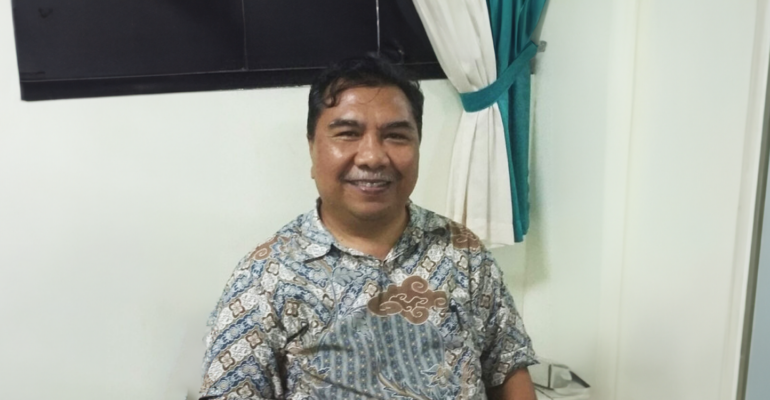IPB University Professor Explains the Importance of Sink and Source in Improving National Rice Productivity

Indonesia, as an archipelago with a large and diverse population, faces complex challenges in ensuring food availability. This was conveyed by Prof Iskandar Lubis, Permanent Professor of the Faculty of Agriculture, IPB University during his online Professor Scientific Oration (8/5).
“There are threats and obstacles in rice production in Indonesia, consisting of climate change, land degradation and natural disasters. Climate uncertainty and increasingly unpredictable weather patterns have impacted agricultural productivity. Floods, droughts and extreme temperature changes can harm crops and threaten the sustainability of food production,” said Prof Iskandar.
“Crop production analysis involves an in-depth understanding of the factors that affect the productivity and quality of agricultural produce. By investigating elements such as water availability, soil, climate, and agricultural technology, this analysis provides the insights needed to improve agricultural efficiency and resilience,” he said.
The professor of crop production analysis explained that yield potential is the ability of plants to express yields based on their genetic potential, and the amount of rice yield is determined by the size of the sink and source.
“Sink size or often called sink capacity is the product of the number of grains per unit area multiplied by the weight of one fully filled rice grain. Meanwhile, the source size for seed filling consists of non-structural carbohydrates accumulated until the heading or half-flowering phase and dry matter produced during the seed filling period,” explained Prof Iskandar.
Prof Iskandar said the size of the sink and source and the balance between them need to be considered in plant breeding. “We should also consider the processes of sink and source formation supported by the photosynthetic capacity of single leaves and stomatal conductance,” he said.
Furthermore, he said, the same consideration is also needed in crop management in order to provide maximum yields. Optimum conditions need to be sought starting from the processes of source and sink formation, to the process of seed filling so that it takes place properly and optimally. (Lp) (IAAS/RUM)



















